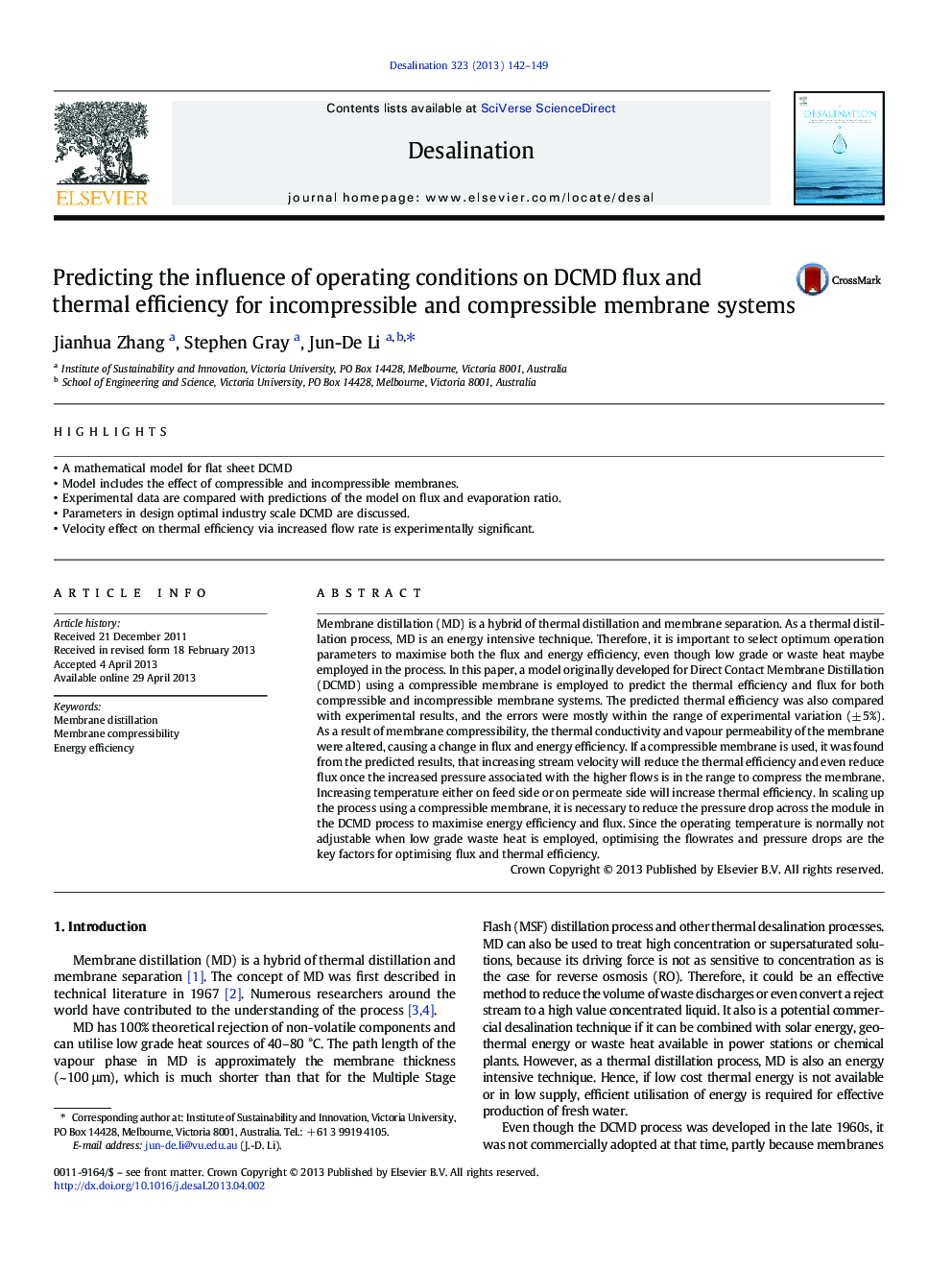| کد مقاله | کد نشریه | سال انتشار | مقاله انگلیسی | نسخه تمام متن |
|---|---|---|---|---|
| 623786 | 1455368 | 2013 | 8 صفحه PDF | دانلود رایگان |

• A mathematical model for flat sheet DCMD
• Model includes the effect of compressible and incompressible membranes.
• Experimental data are compared with predictions of the model on flux and evaporation ratio.
• Parameters in design optimal industry scale DCMD are discussed.
• Velocity effect on thermal efficiency via increased flow rate is experimentally significant.
Membrane distillation (MD) is a hybrid of thermal distillation and membrane separation. As a thermal distillation process, MD is an energy intensive technique. Therefore, it is important to select optimum operation parameters to maximise both the flux and energy efficiency, even though low grade or waste heat maybe employed in the process. In this paper, a model originally developed for Direct Contact Membrane Distillation (DCMD) using a compressible membrane is employed to predict the thermal efficiency and flux for both compressible and incompressible membrane systems. The predicted thermal efficiency was also compared with experimental results, and the errors were mostly within the range of experimental variation (± 5%). As a result of membrane compressibility, the thermal conductivity and vapour permeability of the membrane were altered, causing a change in flux and energy efficiency. If a compressible membrane is used, it was found from the predicted results, that increasing stream velocity will reduce the thermal efficiency and even reduce flux once the increased pressure associated with the higher flows is in the range to compress the membrane. Increasing temperature either on feed side or on permeate side will increase thermal efficiency. In scaling up the process using a compressible membrane, it is necessary to reduce the pressure drop across the module in the DCMD process to maximise energy efficiency and flux. Since the operating temperature is normally not adjustable when low grade waste heat is employed, optimising the flowrates and pressure drops are the key factors for optimising flux and thermal efficiency.
Journal: Desalination - Volume 323, 15 August 2013, Pages 142–149